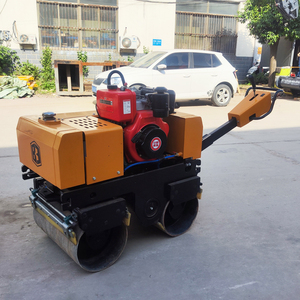
5.5HP năng động xách tay compactor mặt đất rammer cầm tay thêm Heavy Duty RM80 tamping rammer với Honda LONCIN động cơ


Máy móc xây dựng đôi trống đơn 1ton2ton3ton4ton5ton8ton10ton đi bộ phía sau máy đầm rung đi xe trên đường lăn









Alibaba.com cung cấp nhiều dòng gx160 tamping rammer. để đáp ứng mọi nhu cầu của người mua sắm. Những điều này đặc biệt quan trọng đối với việc đào đắp và xây dựng. Chúng rất cần thiết cho việc nén chặt hầu hết các loại đất có ít độ ẩm. Họ cũng làm chặt nền đường, đê, tòa nhà và để lấp các đường ống dẫn khí đốt, đường ống nước và cáp. Khám phá hiệu suất tuyệt vời gx160 tamping rammer. để cải thiện năng suất.
Tốt nhất gx160 tamping rammer. có lực đập mạnh. Chúng có lò xo cường độ cao cho phép nhảy biên độ lớn. Thiết kế tấm đế có độ bền cao với độ mềm và độ cứng vừa phải giúp tăng độ bền cho máy. Họ có một hệ thống chống sốc ngâm trong dầu kín để đảm bảo hoạt động không gặp sự cố. Alibaba.com cũng cung cấp các kích thước khác nhau. Các máy nhỏ hơn phù hợp với các công việc nhỏ và các máy lớn cho các công việc lớn hơn.
Duyệt qua và tìm các bộ phận của gx160 tamping rammer. chẳng hạn như máy đầm tấm có vai trò quan trọng đối với tuổi thọ của vật liệu. Sản phẩm chất lượng cao có kết quả đầm nén tốt và khả năng cơ động. Thiết kế mỏng của chúng mang lại cho chúng dấu chân nhỏ cho phép chúng di chuyển dễ dàng. Chúng là cấu trúc mạnh mẽ và bền. Các thương hiệu hàng đầu sản xuất máy với độ tin cậy vô song, nhanh chóng và hiệu quả. Do đó, chúng tiết kiệm tiền bạc và thời gian và cho phép các nhà thầu kiếm được tỷ suất lợi nhuận cao hơn. Xây dựng danh tiếng như một nhà thầu nhanh chóng và hiệu quả và đứng để có được nhiều khách hàng hơn. Tìm tất cả những sản phẩm chất lượng này với giá cả hợp lý và giúp công việc trở nên dễ dàng hơn.
Nhận các công cụ khó khăn cho những công việc khó khăn và đạt được kết quả tốt. Alibaba.com cung cấp các sản phẩm hạng nhất cho thị trường trong nước và toàn cầu. Giá cả phải chăng gx160 tamping rammer. tùy chọn cho kết quả không thể so sánh được.